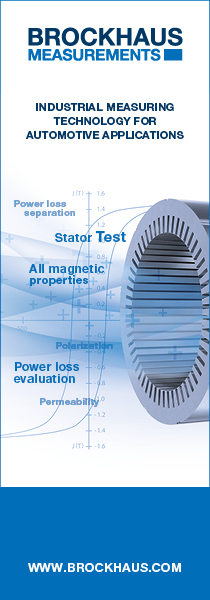Updated 18/04/17
Electrical power grids are changing. Intermittent energy sources, notably wind turbines, are becoming significant, generators linked by electronic converters are widespread and increasing and links to other networks are being installed. Such changes have implications for all items connected to the grid.
The grid has always relied on magnetic devices, principally alternators and transformers; these devices must now meet more stringent grid codes and new types of magnetic device are needed. Novel devices for energy storage, fault current limiting and for use with electronic converters are being developed, some making use of improved magnetic materials and in some cases using superconductors. These are enablers for the increasing penetration of intermittent energy into the grid, facilitating the decarbonisation of our energy economy.
The seminar will present a small selection of developments under way, some that are currently being installed and others still in the research labs.
CHAIRS
- Mr Jeremy Tompkins, Vacuumschmelze GmbH & Co KG
- Dr Arwyn Thomas, Siemens Wind Power
- Prof Ed Spooner
DRESS CODE
The dress code for the day is business attire / smart casual.
TRAVEL INFORMATION
Getting to the to the University of Manchester
Walking – The Sackville Street campus venues are less than 5 minutes walk from Piccadilly station and our Oxford Road campus is just a further 10 minutes away. To plan your walking route, please go to walkit.com
Rail – Travelling by train couldn’t be easier, with most major cities across the UK offering direct train services into Manchester Piccadilly station, which is just 5 minutes walk from Sackville Street campus and a short taxi ride.
Car – The University’s campuses are located from just 1 mile to the nearest motorway junction and there are University signposts directing you to the campuses. The M60 outer ring road connects to all the motorways running into Manchester from north, south, east and west.
The car parks on the Sackville Street and Oxford Road campuses are chargeable. Chancellors Hotel offers complimentary parking and there is limited free parking within the student halls of residence, subject to availability.
For more details of University car parks, please visit The University of Manchester’s Travel Directions.
Air – Manchester International Airport has flights from over 200 destinations worldwide and the airport is located just 10 miles from the city centre with a direct train service into Piccadilly station every 20 minutes throughout the week. The approximate cost is £5 for a single journey and the journey time is just 15 minutes. Alternatively you can get a taxi to the city centre which costs less than £20. To get more detailed and comprehensive information about flying into Manchester, take a look at the Manchester Airport website.




